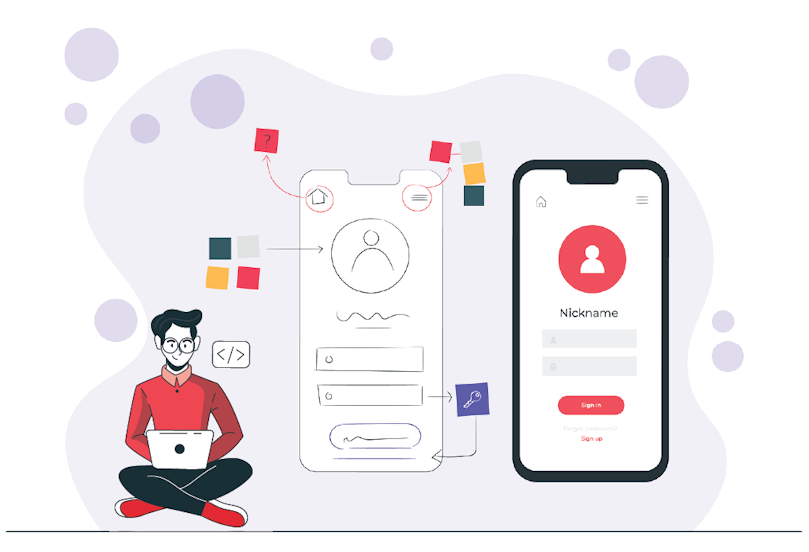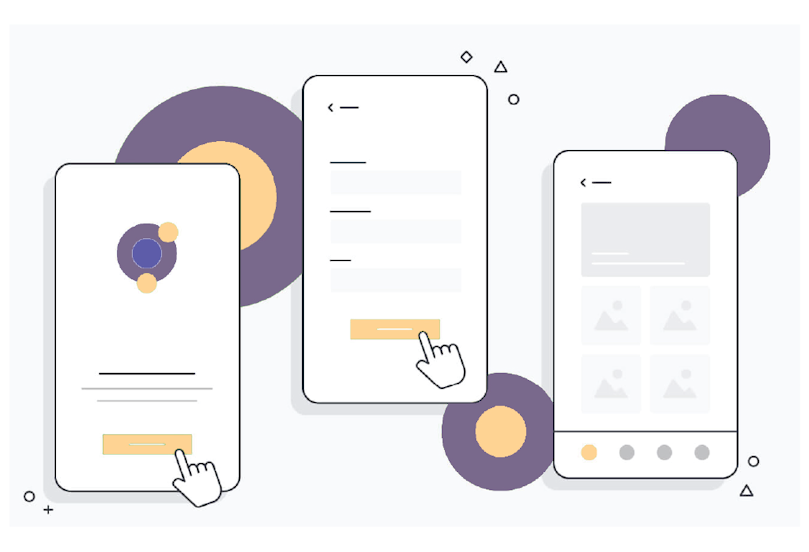In today's digital landscape, where information is abundant and attention spans are fleeting, Information Architecture (IA) plays a pivotal role in shaping user experiences. At its core, IA is the structural design of shared information environments, ensuring that users can easily navigate and find what they need.
The purpose of this article is to delve into how effective IA enhances customer experience across various digital platforms. By creating intuitive pathways and clear hierarchies, businesses can significantly improve user satisfactions and engagement.
Investing in robust IA is not just a design choice; it’s a strategic necessity. Companies that prioritize IA are better positioned to retain customers, foster loyalty, and ultimately drive growth in an increasingly competitive marketplace.
Let’s explore the transformative power of IA and how it can elevate the digital experience for everyone.

User-Centric Design
User Needs
At the heart of effective Information Architecture (IA) is a deep understanding of user needs. Conducting thorough user research is essential; it provides valuable insights into how users interact with content and what they seek. By analyzing data from surveys, interviews, and usability tests, IA practitioners can create structures that genuinely resonate with users, ensuring that their experiences are both intuitive and satisfying.
Developing personas is another crucial step in this process. These fictional representations of target users help designers visualize and empathize with different audience segments. By tailoring the user experience to meet the specific needs, goals, and behaviors of these personas, businesses can create more engaging and relevant digital experiences that foster connection and loyalty.
Tailored Navigation
Designing intuitive navigation structures is vital for guiding users through digital environments. A well-thought-out IA allows users to find information effortlessly, reducing frustration and enhancing engagement. By organizing content logically and providing clear pathways, users can navigate with confidence, leading to a more enjoyable experience.Equally important is the use of consistent and clear labeling.
Labels should accurately reflect the content they represent, making it easier for users to understand where they are and where they need to go. When users encounter familiar terminology and straightforward labels, they feel more at ease, which encourages exploration and interaction. Ultimately, a user-centric approach to IA not only enhances usability but also cultivates a sense of trust and satisfaction among users.
Organized Content Structure
Logical Content Hierarchy
Crafting a logical content hierarchy is a fundamental aspect of Information Architecture (IA). Sitemaps serve as the foundation, providing a visual representation of the website's structure and the relationships between different pages. By categorizing content into intuitive groupings, IA practitioners create a clear hierarchy that helps users understand the overall context and navigate more effectively.
Grouping related content is another crucial element of IA. By clustering similar topics and concepts together, users can easily find what they're looking for and discover additional relevant information. This approach not only enhances navigation but also encourages exploration and engagement.
When users can seamlessly move from one piece of content to another, they're more likely to spend more time on the site, leading to increased engagement and potential conversions.
Consistency
Consistency is key when it comes to delivering a seamless user experience across various digital platforms. IA ensures that design elements, such as navigation menus, labeling, and content organization, remain uniform regardless of the device or channel. This consistency creates a sense of familiarity and trust, allowing users to navigate with ease and confidence.
By maintaining a consistent user experience across devices, IA helps bridge the gap between different platforms. Users can switch between desktop, mobile, and tablet without feeling disoriented or frustrated. This level of consistency not only enhances usability but also fosters a stronger connection between the user and the brand.
When users can rely on a familiar and intuitive interface, they're more likely to engage with the content and complete desired actions.
Enhanced Findability
Advanced Search Functionalities
In today's information-rich digital landscape, advanced search functionalities are essential for helping users quickly locate the content they need. Information Architecture (IA) plays a crucial role in designing and implementing these powerful search tools.
By incorporating features like auto-complete, spell-check, and relevancy-based ranking, IA ensures that users can easily find what they're looking for, even if they're unsure of the exact keywords or phrasing.
These advanced search capabilities not only enhance usability but also boost engagement and conversions. When users can quickly and accurately find the information they need, they're more likely to spend more time exploring the site and completing desired actions. This not only leads to higher satisfaction but also translates into tangible business benefits, such as increased sales, lead generation, and customer loyalty.
Faceted Navigation
Faceted navigation is another powerful tool in the IA arsenal for enhancing findability. By allowing users to filter and refine search results based on multiple criteria, faceted navigation enables efficient information retrieval.
Users can quickly narrow down options based on their specific needs and preferences, saving time and effort.Faceted navigation is particularly useful in e-commerce and content-heavy websites, where users may be overwhelmed by the sheer volume of options.
By providing a clear and intuitive way to filter results, IA helps users make informed decisions and find exactly what they're looking for. This not only improves the overall user experience but also increases the likelihood of conversions and repeat visits.
Multi-Device Accessibility
Responsive Design
In our fast-paced digital world, responsive design is key to making content accessible across various devices. By allowing websites to adapt seamlessly to different screen sizes, responsive design ensures that users enjoy a consistent experience, whether they’re browsing on a desktop, tablet, or smartphone. This adaptability not only enhances usability but also makes it easier for users to engage with content, no matter where they are.

Touch-Friendly Interfaces
For mobile users, touch-friendly interfaces are essential. Unlike traditional mouse-and-keyboard interactions, mobile devices rely on touch gestures. Designing interfaces with larger buttons and intuitive navigation makes it easier for users to tap, swipe, and scroll. This thoughtful approach minimizes frustration and enhances engagement, allowing users to interact with content effortlessly.
By prioritizing responsive design and touch-friendly elements, businesses can create a more inclusive digital experience that invites users to explore and connect, no matter their device.
Strategic Business Integration
Support for Artificial Intelligence
As artificial intelligence (AI) continues to revolutionize the digital landscape, Information Architecture (IA) plays a crucial role in supporting these cutting-edge technologies. By structuring data in a clear and organized manner, IA enables AI systems to process information more efficiently.
This structured data serves as the foundation for personalization algorithms, allowing AI to tailor content and recommendations to individual user preferences.Moreover, IA's emphasis on logical hierarchies and relationships between data points aids AI in making accurate predictions and anticipating user needs. When information is neatly organized and easily accessible, AI can quickly identify patterns and insights, leading to more relevant and engaging experiences.
By seamlessly integrating IA and AI, businesses can create a powerful synergy that drives customer satisfaction and business success.
Organizational Values
A well-designed Information Architecture not only enhances the user experience but also reflects a company's commitment to customer-centric approaches. When users encounter a website or application with a clear and intuitive structure, it demonstrates the organization's dedication to meeting their needs.
This commitment to usability and accessibility is a powerful way to build trust and loyalty with customers. Furthermore, IA can help businesses align their digital presence with their core values and brand identity.
By crafting a consistent and cohesive information architecture across all touchpoints, companies can create a seamless brand experience that resonates with users. This alignment between IA and organizational values is a testament to the strategic importance of IA in today's digital landscape.
Feedback and Improvement
Iterative Design
In the realm of Information Architecture (IA), iterative design is essential for creating user-centered experiences. By actively seeking and incorporating user feedback, businesses can refine their IA to better meet the needs and expectations of their audience. This ongoing dialogue with users not only highlights areas for improvement but also fosters a sense of ownership and engagement, making users feel valued in the design process.
Leveraging Analytics
Analytics play a pivotal role in the continuous improvement of IA. By analyzing user behavior and interaction patterns, businesses can gain valuable insights into what works and what doesn’t. This data-driven approach allows organizations to make informed adjustments, ensuring that their IA remains relevant and effective over time.
By combining user feedback with analytical insights, companies can create a dynamic and responsive information architecture that evolves alongside user needs, ultimately enhancing satisfaction and loyalty. Embracing this cycle of feedback and improvement is key to staying ahead in today’s fast-paced digital landscape.
In summary
Information Architecture (IA) is a fundamental element in enhancing customer experience across digital platforms. By prioritizing user-centric design, organized content structures, and advanced findability, businesses can create engaging and accessible environments that foster satisfaction and loyalty.
Looking ahead, the future of IA is bright, with ongoing trends such as AI integration, voice search optimization, and personalized content delivery shaping the landscape. As technology continues to evolve, embracing these trends will be crucial for organizations aiming to stay relevant and responsive to user needs, ultimately leading to richer and more meaningful digital experiences.





